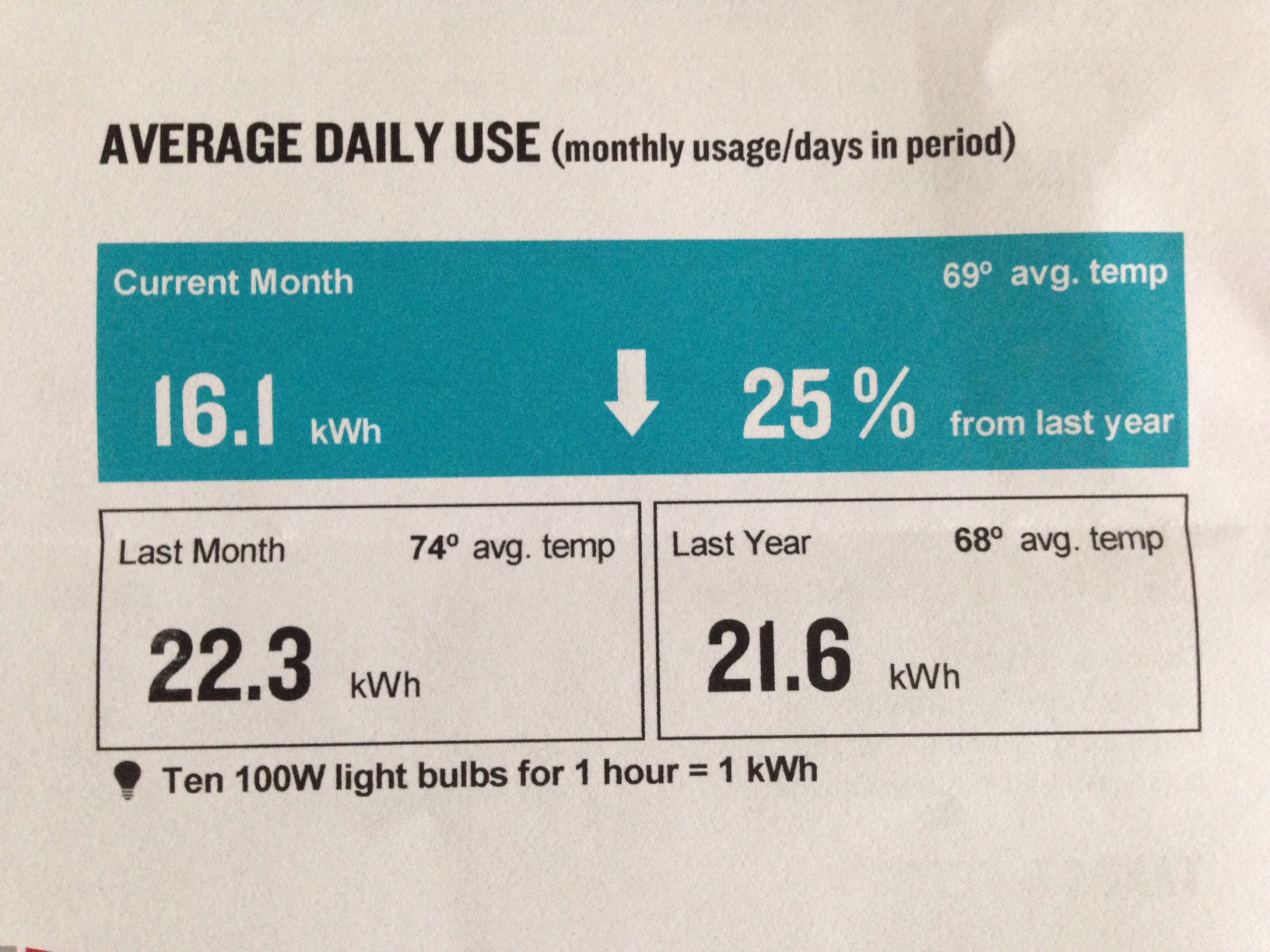Laurie’s documented drop in energy use.
By Laurie Casey
It's early October, and the annual holiday marketing onslaught is not too far away. "The more you spend, the more you save," is one of my favorite crazy slogans. Does that really work on people? If you've spent $500 on new sweaters to save $100, you've just, um, spent $400.
Unless... you put on one of those sweaters, and then crank down your thermostat to save money on your heating bill. Love it!
Actually, there are a number of ways to invest in your home to reduce carbon emissions, save the planet and save money to boot. My family made some modest investments in fall 2015, and we are slowly recouping our money through lower bills. In fact, this year we used 9% less natural gas and 17% less electricity than during the previous 12 months.
Here's how we did it. I live in a detached single-family home, but apartment and condo dwellers can apply some of these ideas.
A more efficient refrigerator was fundamental in contributing to a drop in energy usage.
ComEd's Website
If you haven't created a sign-in at ComEd.com, do it now. The site is easy to navigate, and contains a lot of good advice in the "My Usage" area. Take a few minutes to answer simple questions to get tailored advice for reducing energy use.
And if you are the competitive type, the ComEd website even compares your electricity use to your neighbors. A quick check today helped me discover that over the past 12 months, we've used 18% less electricity than the top 20 energy-efficient homes in my neighborhood, and 50% less than the average comparably sized neighboring home. Wowsa.
New Refrigerator
One key reason is that last November we replaced our 1980 model refrigerator with an Energy Star rated model. That 40-year-old refrigerator was an energy vampire. After switching it out, our electricity use is now down 17% compared to the previous year.
Insulation & Caulk
It's not sexy, but sealing leaks and insulating is one of the most cost-effective ways to reduce natural gas consumption. We called Elevate Energy, a local nonprofit that links homeowners to vetted and certified weatherization contractors.
Our contractor gave us a work proposal and estimate that included a credit for a $400 Nicor Rebate. When the day-long project was complete, they charged us the after-rebate amount, and filled out and submitted the rebate paper work on our behalf.
Comparing natural gas use year-to-year can be complicated by weather variables, but using data from Nicor's site, we charted the therms of natural gas we used vs. heating degree days (the number of degrees that a day's average temperature is below 65 degrees Fahrenheit). In doing so, we could achieve a better apples-to-apples comparison. The results showed a 9% decrease in natural gas use year-over-year.
Pro Tip: Don't Worry About Windows
I'll save you $10,000 right now: if you are concerned about window drafts and their impact on your heating bill, don't run out and replace your windows. As we learned from an Elevate Energy presentation, window drafts are actually a sign that cold air is flowing out of your roof. Picture the way a straw works: if you suck out air at the top, the rest of the air in the straw gets drawn up right after it.
So insulate your attic and seal air leaks around the building first, and then see where you are at with window drafts.
So, Who Wants a Challenge?
I'm issuing a challenge... can you beat my energy efficiency results?
I'm sure many of you reading this have other, even better ideas for cutting home energy use. Maybe you've been able to achieve even more dramatic energy reductions. Please share your stories on our Facebook page or in the comments section below.
And if you are starting from square one and don't know where to begin, attend our upcoming Green Guides meeting at 10 a.m. OR 7 p.m. Wednesday, Oct. 26, at Oak Park Main Library, 834 Lake St.


